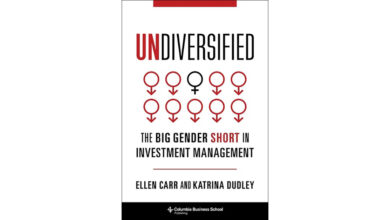From Owing to Owning: How Communities Can Control Commercial Land – Non Profit News


“From Owing to Owning,” reads a sign at the entrance of Plaza 122, a 29,000-square-foot strip mall near the corner of SE 122nd Avenue and SE Market Street in Portland, OR. The complex is modest, but it houses an estimated 27 primarily immigrant-led small businesses and nonprofits. What makes the strip mall unique is its community ownership.
A nonprofit, the East Portland Community Investment Trust, serves as the owner and lead manager and developer of the property, and for a monthly subscription fee of $10 to $100, nearby residents can become owners themselves. As of April 2022, the property had 281 community investors. According to a report published in November 2022 and authored by Julia Duranti-Martinez of the Local Initiatives Support Corporation, the number of community owners now exceeds 300.
The report, titled Commercial Community Ownership as a Strategy for Just Development: Case Studies and Implementation Lessons, highlights nonprofit-led initiatives involving community ownership of commercial real estate in Portland as well as Minneapolis-St. Paul, New Orleans, Anchorage, and Los Angeles. Each initiative has its own unique features and challenges. Nonetheless, the examples speak to the potential for community organizing, when connected to land acquisition funds, to greatly improve prospects for businesses and residents in low-income communities and communities of color.
Rationales for Community Ownership
While motivations for pursuing community ownership of land vary, there are some common elements. Often, preserving local business access to commercial land is a central concern. As Duranti-Martinez explains, in many communities, “real estate disinvestment and speculation have harmed and destabilized Black, Indigenous, and people of color (BIPOC) and low-income communities and sent prices out of reach, including for commercial space. Annual commercial rent increases can range from seven to 26 percent across the country” (5).
Additionally, Duranti-Martinez points out, “Community ownership also means that the people most impacted by racial, economic, and environmental injustice have meaningful decision-making power over development” (7). Potential benefits include ensuring commercial rents stay affordable; providing security of tenure for local small businesses and nonprofits; promoting quality jobs; and potentially, through lease income, generating a source of non-philanthropic income for nonprofit landowners—and even individual resident-owners, as in Portland.
Each community also has its own specific reasons for seeking community ownership. For instance, the Anchorage Community Land Trust, which began in 2003 and is the oldest example reviewed in the report, acquired land in a BIPOC neighborhood that had a 25.1 percent poverty rate (as of 2001). Seeded with an initial $5 million grant from a local foundation, the land trust acquired nine parcels between 2005 and 2011. Purchasing land was, in a sense, the easiest step. Making the land usable was often harder since remediation of past pollution was frequently required.
Los Angeles, home to multi-nonprofit effort CORE (Community Owned Real Estate), provides a perhaps more classic case of using community ownership of commercial real estate as a strategy to support existing businesses and avoid displacement. As Tom De Simone described for NPQ in a recent article, a central motivation of nonprofit commercial ownership in East Los Angeles is to “provide economic security to legacy business owners and neighborhood nonprofits and preserve the neighborhood’s commercial character and culture.”
Other community-ownership initiatives fall between these two poles—resisting gentrification and encouraging community reinvestment. In New Orleans, Crescent City Community Land Trust, founded in 2011, aims to use commercial land ownership to help rebuild a Black business community that was recovering from Hurricane Katrina even as it faced gentrification pressures that made reinvestment far more difficult. In Minneapolis-St. Paul, efforts to develop Partnership in Property Commercial Land Trust began in 2017. However, support for community ownership of commercial spaces really gained ground “in the wake of historic uprisings for racial justice following the murder of George Floyd, as a way to rebuild damaged commercial corridors while promoting BIPOC self-determination and preventing long-term displacement” (18).
Portland is unique among these examples in that the motivation for creating community ownership, as described by the nonprofit, Mercy Corps Northwest, is less focused on supporting local BIPOC-owned businesses and more on helping BIPOC residents invest directly in joint community-land ownership. As a 2020 concept paper details, the nonprofit organized the East Portland Community Investment Trust to provide community members with an investment option that, unlike individual development accounts, is not dependent on the nonprofit raising funds to match individual savings. Instead, earnings are generated by the trust itself. To participate, community members can purchase an ownership share in the enterprise, contingent on completing an eight-hour financial education course.
The concept paper elaborates that the trust mechanism itself is “designed to provide an on-ramp to personal savings by facilitating investment in a community asset, creating a safety net for those in asset poverty and, at the same time, spreading the value of appreciating property in a gentrifying neighborhood across the larger community” (11). Only residents of four surrounding area zip codes are eligible to become investors, although Duranti-Martinez points out that tenant businesses are also permitted to purchase community investor shares. Annually, community investors receive a dividend of at least two percent.
In April 2022, the dividend was 4.57 percent for a payout of $16,886 (an average dividend of $60 per community investor) on a total community investment of approximately $369,000. According to the East Portland Community Investment Trust, over 61 percent of that community investment came from BIPOC residents, 65 percent from women, 52 percent from renters, and 46 percent from households earning under $40,000 a year.
Sign up for our free newsletters
Subscribe to NPQ’s newsletters to have our top stories delivered directly to your inbox.
By signing up, you agree to our privacy policy and terms of use, and to receive messages from NPQ and our partners.
Building Ownership Capacity: Successes and Challenges
As Duranti-Martinez acknowledges, her report does not cover all community commercial land ownership initiatives. Some community land trusts, although better known for housing, are well-established and have become owners of significant amounts of commercial real estate. Duranti-Martinez notes, for example, that Champlain Housing Trust—based in Burlington, VT, and home to the nation’s largest community land trust—stewards 140,000 square feet of commercial space, in addition to over 3,000 residential homes. In Denver, she adds, the Urban Land Conservancy has developed 650,000 square feet of commercial property.
By contrast, other than the Anchorage Community Land Trust, most organizations profiled in the report are in the early-stage category. Anchorage’s land trust has a good deal to show for its 20 years of work. It operates one building that leases to seven nonprofit organizations. Another building it owns houses the land trust’s office and a business-development training center known as Set Up Shop. Other properties house art studios for Alaska Native and American Indian artists; a restaurant; and a credit union, which was the first financial institution to open in the community in over 20 years. The land trust also owns a small urban farm, which it leases to a refugee services nonprofit. This farm supports 20 immigrant and refugee farmers and emerging food entrepreneurs. Unlike in Portland, the Anchorage nonprofit maintains direct ownership, leasing properties to businesses and nonprofits.
The New Orleans-based Crescent City Community Land Trust may have had the hardest path to travel. The group acquired properties at a discount from the New Orleans Redevelopment Authority and received a portfolio of homes from the Ford Foundation. While the trust has successfully developed 25 units of affordable housing as part of a mixed-use project, the development’s commercial end, known as The Pythian Building, which opened in 2017, was sold to private investors in 2022 as the commercial enterprises did not generate enough income to sustain operations. Crescent City’s Chief Strategist, Gregory St. Etienne, claims that “lack of capacity and experience on the nonprofit developer side” is to blame (16).
A smaller project that opened in 2019 succeeded in restoring the building that houses the Vaucresson Sausage Company, a Black-owned business in operation for 120 years. The restoration includes space for sausage production, with the Vaucresson family operating a café on the site. There are also two permanently affordable housing units above. The Crescent City nonprofit retains a 19 percent ownership share of the complex and is currently merging with larger nonprofits to preserve its work. The need for this merger also speaks, however, to the importance of partnerships and resources when it comes to real estate strategy.
As for initiatives underway in the Twin Cities and Los Angeles, both efforts are nascent, but both groups also appear to have developed a strong set of partners, making these efforts promising. About the Twin Cities, Duranti-Martinez reports that, “With support from local and county agencies, community development financial institutions (CDFIs), and cooperative partners, PIP CLT acquired its first three properties in 2021, with several more in the pipeline” (20). Duranti-Martinez highlights the “strong local ecosystems, public support, and collaboration among cooperatives” (21) that are enabling such rapid growth.
Similarly, CORE, the East Los Angeles effort, has the backing of a CDFI, Genesis LA, which was able to access $10 million in New Markets Tax Credits to help finance the acquisition of four properties. CORE partners currently manage five buildings with approximately 20 BIPOC business and nonprofit tenants. Ownership is through a limited liability company. Equity is divided among three nonprofits: 55 percent is held by the East Los Angeles Community Corporation, the lead developer; 35 percent by Inclusive Action for the City, the lead organizer; and 10 percent by Little Tokyo Service Center, which has played an advisory role in the effort. Despite the difference in equity shares, bylaws specify that in major decisions, such as selling a building, all three nonprofits have an equal say.
While money to acquire land is vitally important, community ownership of commercial property requires more than acquisition funds.
In terms of running the building that CORE now owns, the first step, Duranti-Martinez emphasizes, is to lengthen tenant leases to provide stable tenure. The vision at the end of the seven-year New Markets Tax Credit partnership period, she adds, is to transfer ownership, which will either involve adding commercial tenants as additional partners in the LLC or selling the buildings to the tenants, potentially in partnership with one of Los Angeles’s five community land trusts, or some combination of those strategies.
Looking Forward
“We’re trying to see if we can get into city budgets, but right now, it’s been a lot of innovation grants and grants for startups and seed funding.…We’re really trying to look long-term”
Duranti-Martinez observes that “community ownership is more expansive than just having a financial stake in a building” (29). It involves, among other things, preserving businesses and maintaining community control over decision making. One key lesson in this work is that “in all cases, acquisition and rehabilitation of commercial real estate preceded community planning, engagement, and organizing.” As Rudy Espinoza of Inclusive Action tells Duranti-Martinez, “If the community needs five years to figure out governance, we’ll get them five years, but first, we’ve got to get the buildings” (30).
That said, while money to acquire land is vitally important, community ownership of commercial property requires more than acquisition funds. Other themes that Duranti-Martinez emphasizes include the following:
- Commercial real estate is risky, so money for feasibility studies is necessary.
- Community land trusts must be able to help commercial tenants “cure” defaults and work with banks to avoid foreclosure. Such assistance is as important as similar CLT deed provisions for resident mortgages used during the Great Recession. These helped keep foreclosure rates for CLT homeowners at one-eighth of those for fee-simple homeowners.
- Philanthropy can also assist by supporting field-building practices, such as peer-learning collaboratives, community organizing, and advocacy.
- A particularly useful tool would be community “opportunity to purchase” legislation, which could function like tenant “first right to purchase” laws. These laws give residents the first right to purchase multifamily residences (at market rates) whenever a property comes up for sale.
There’s also a need, as Domonique Jones, executive director of PIPCLT in Minneapolis-St. Paul, tells Duranti-Martinez, for public policy to go beyond funding community ownership “experiments.” As Jones puts it, “We’re trying to see if we can get into city budgets, but right now, it’s been a lot of innovation grants and grants for startups and seed funding.…We’re really trying to look long-term” (32).





